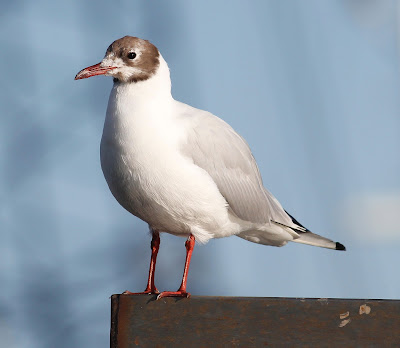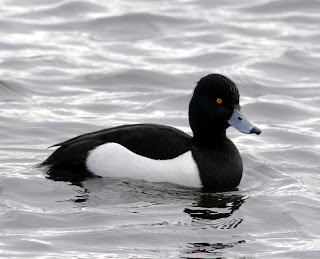My early morning car journey produced another Barn Owl this morning, the bird flying across Head Dyke Lane just ahead of a cyclist. So close was the owl the cyclist might well have been surprised enough to stop for a closer look. He didn't, so maybe he needed to get to work and not clock in late after lingering to bird watch.
I had about five seconds with the owl before it continued on its way across the roadside fields.
Further along the road a Kestrel sat atop a roadside pole. After a horrific winter and spring Kestrels in these parts are definitely scarce this year with my own sightings limited to one or two a week. I fear many starved to death in the new year.
Kestrel
There's been a high turnover of birds at Conder Green this week, the twice a day very high tides serving to clear birds from the marsh, many being pushed firstly into the creeks and eventually to the pool beyond. But when I arrived at Conder this morning there wasn't much doing on the pool or in the creek so counts are on the low side.
After high counts of Little Egrets this week, think of a number between 1 and 16, today just two. Three Grey Heron, one on the pool, two on the marsh. One Greenshank, 35 Redshank, 24 Lapwing, 2 Common Sandpiper and 1 Little Ringed Plover. Yes, the plover that has been playing hide-and-seek with birders reappeared along the muddy edges before quickly trotting off to conceal itself on the back pool. Two Stock Doves and 2 Pied Wagtails picked through the muddy margins where the swans and now the cattle are doing a splendid job of turning it to wader heaven.
The wildfowl at least are mostly consistent even though I couldn't see/find any Little Grebe today, just 1 Goldeneye, 2 Wigeon, the Tufted Ducks with 4 young, and 4 Canada Goose.
Canada Goose
Goldeneye
Wigeon
Lots of Swifts this morning, 40+ here at Conder with 15 more at Glasson. A decent number of Swallows at Glasson, with 30+ hawking the walkways, the yacht basin and the dock.
Barn Swallow
Black-headed Gull
There were 8+ Whitethroats alongside the churchyard and the canal tow-path, all skulking in the flower-filled brambles. It's going to be one hell of a year for blackberries. I stopped to take a picture of a family of Mute Swans, Mr Swan being especially assertive and more than a liitle aggressive. I reminded him that I may well have upended him to fit that blue ring some years ago, and if necessary I could defend myself.
Whitethroat
Mute Swan
Mute Swan



















































































